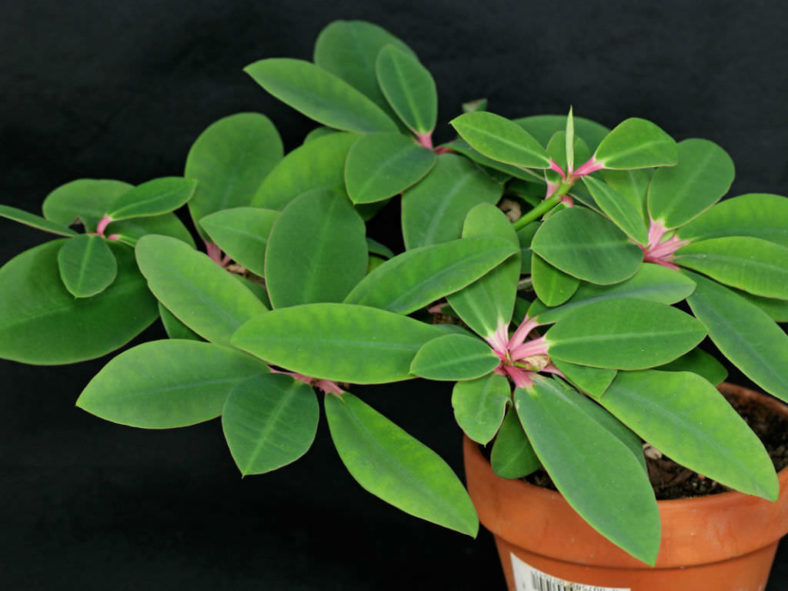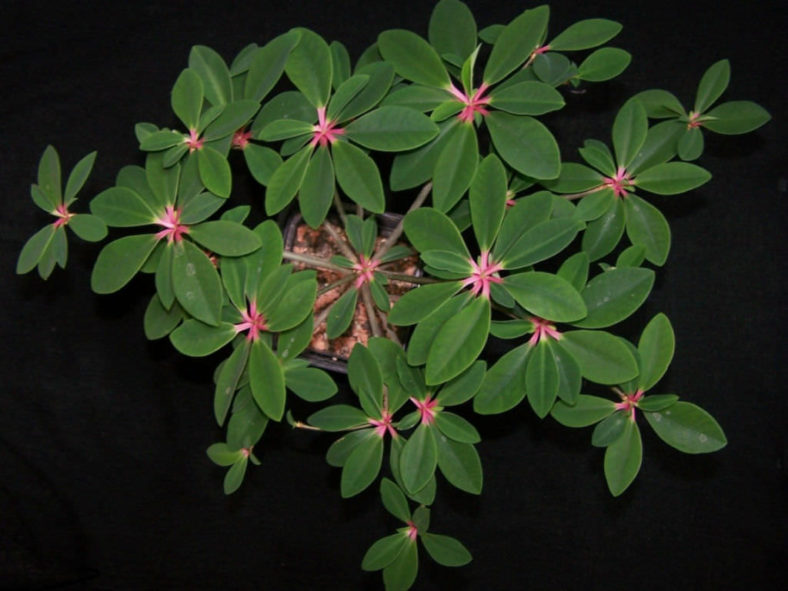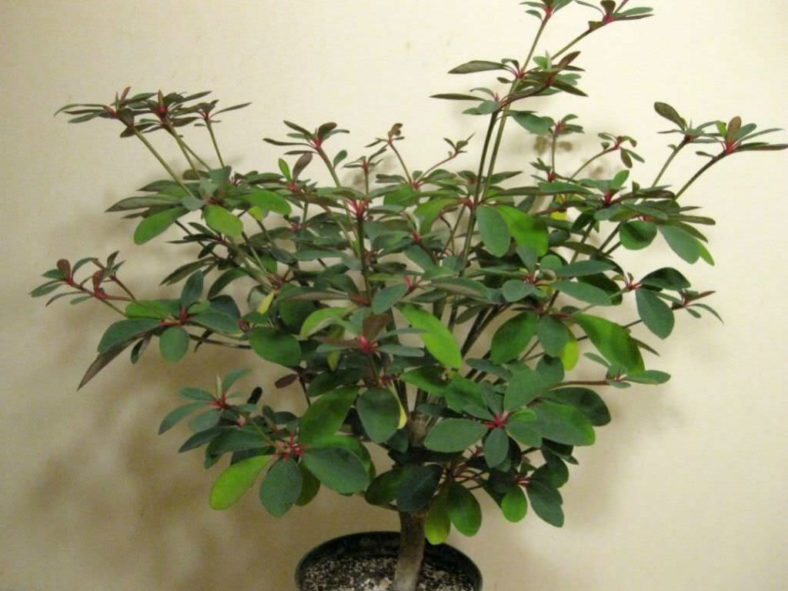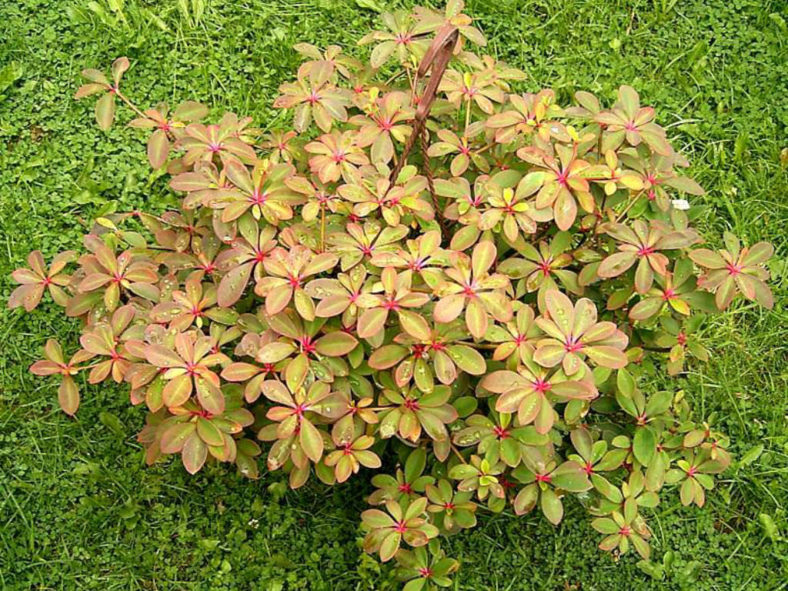Scientific Name
Euphorbia bongolavensis Rauh
Scientific Classification
Family: Euphorbiaceae
Subfamily: Euphorbioideae
Tribe: Euphorbieae
Subtribe: Euphorbiinae
Genus: Euphorbia
Origin
Euphorbia bongolavensis is endemic to Madagascar. It occurs in subtropical or tropical dry forests.
Description
Euphorbia bongolavensis is a slow-growing xerophyte with a main stem and numerous branches with clusters of deciduous, uniquely colored leaves at the tip, forming an open, umbrella-like crown. It grows up to 3.3 feet (1 m) tall. The main stem is woody with pale gray peeling bark, up to 16 inches (40 cm) tall, up to 1.6 inches (4 cm) in diameter, and with branches only near the tip. Leaves are lance-shaped to ovate, up to 2.6 inches (6.5 cm) long and 1.4 inches (3.5 cm) wide, with a red, up to 0.4 inches (1 cm) long petiole. They are dark green to bluish-green. The color varies depending on the intensity and amount of sunlight they receive.
This species is dioecious, which means it has male and female flowers in separate plants. Female cyathia are usually solitary, rarely 2. Male cyathia are in clusters of 3 to 4. They are tiny, pale yellow, and appear in mid-spring. Fruits are obtusely lobed capsules with tiny seeds inside.

Hardiness
USDA hardiness zones 10b to 11b: from 36 °F (+1.7 °C) to 50 °F (+10 °C).
How to Grow and Care
Euphorbias are very easy to care for. These plants require a little pampering to become established, but once they are, they are self-sufficient. More die from too much care and watering than from neglect. Euphorbias need well-draining soil and lots of sunlight. They are not particular about soil pH but cannot tolerate wet soil. Unlike most succulents, Euphorbia does not handle long periods of drought well. It may need weekly watering during the summer. Water whenever the soil is dry several inches below the surface. Water deeply, but don't let them sit in wet soil, which can cause root rot. Add some organic matter or fertilizer to the planting hole. If you are growing them in containers or your soil is poor, feed them with a half-strength fertilizer monthly.
These succulents can be grown from seed, but they can be difficult to germinate (or even find). They are usually propagated by cuttings. This can be tricky because of the exuding sap. Rooting hormone is recommended with Euphorbias. They tend to grow problem-free, but there are a few pests and diseases to be alert for.
Learn more at How to Grow and Care for Euphorbia.
Links
- Back to genus Euphorbia
- Succupedia: Browse succulents by Scientific Name, Common Name, Genus, Family, USDA Hardiness Zone, Origin, or cacti by Genus
Photo Gallery
Click on a photo to see a larger version.


